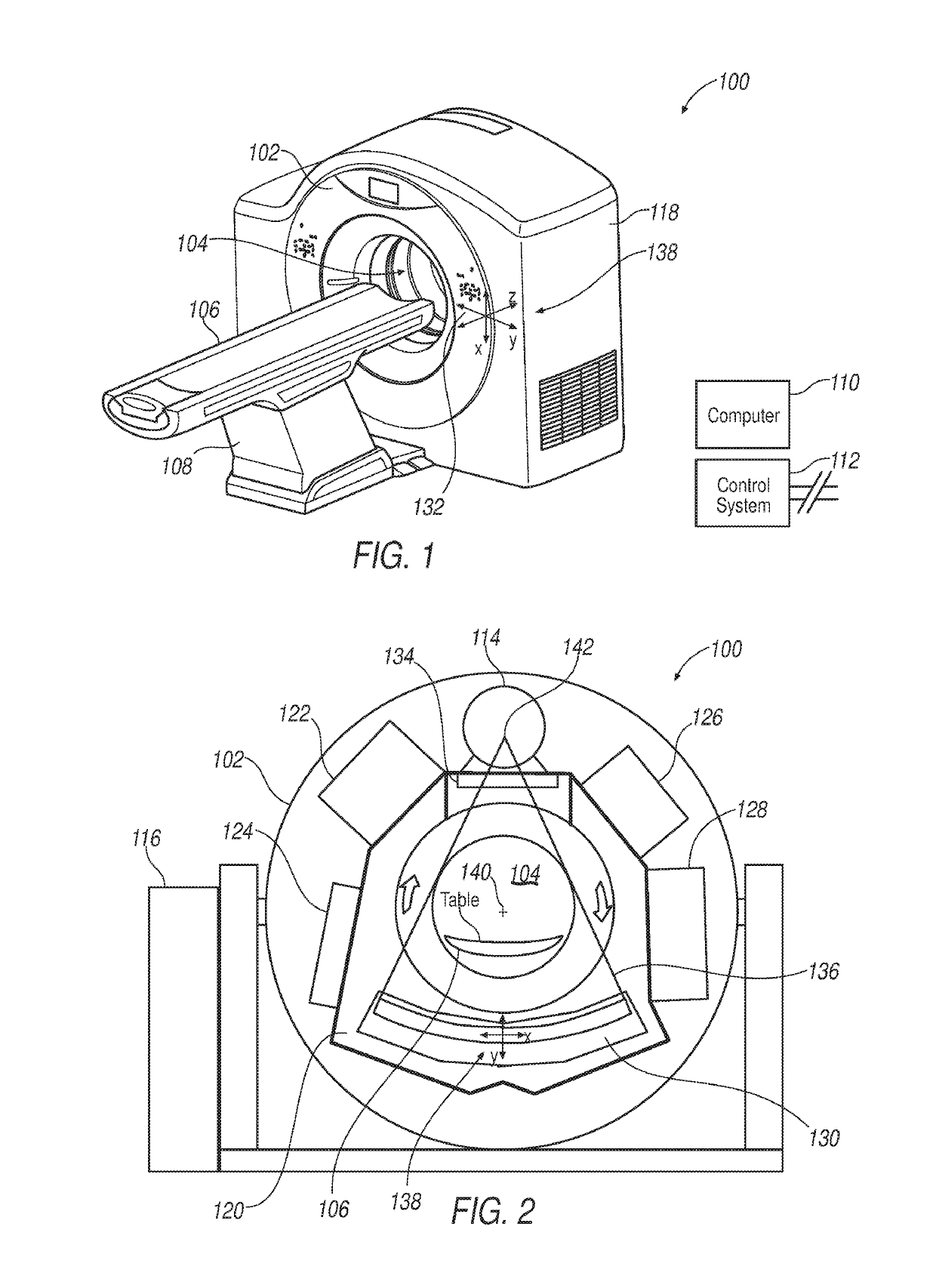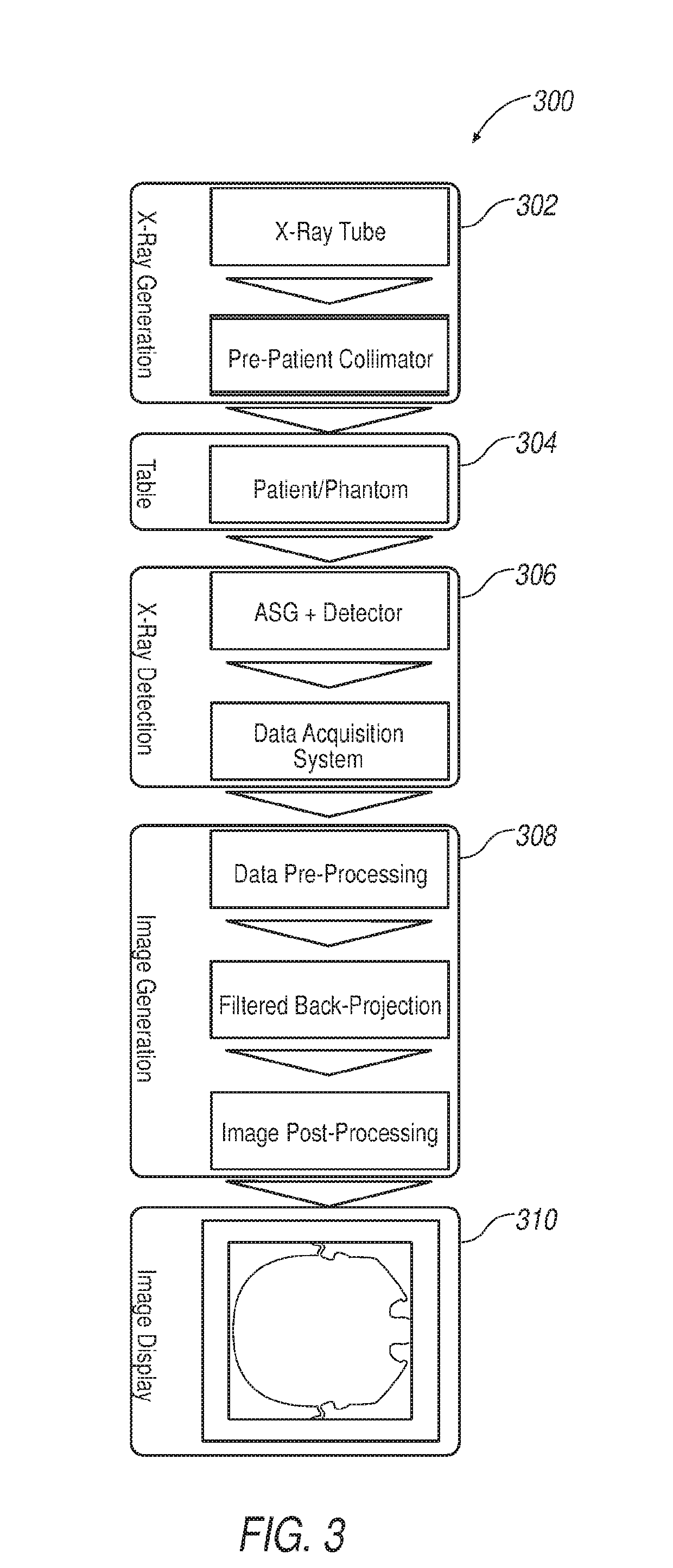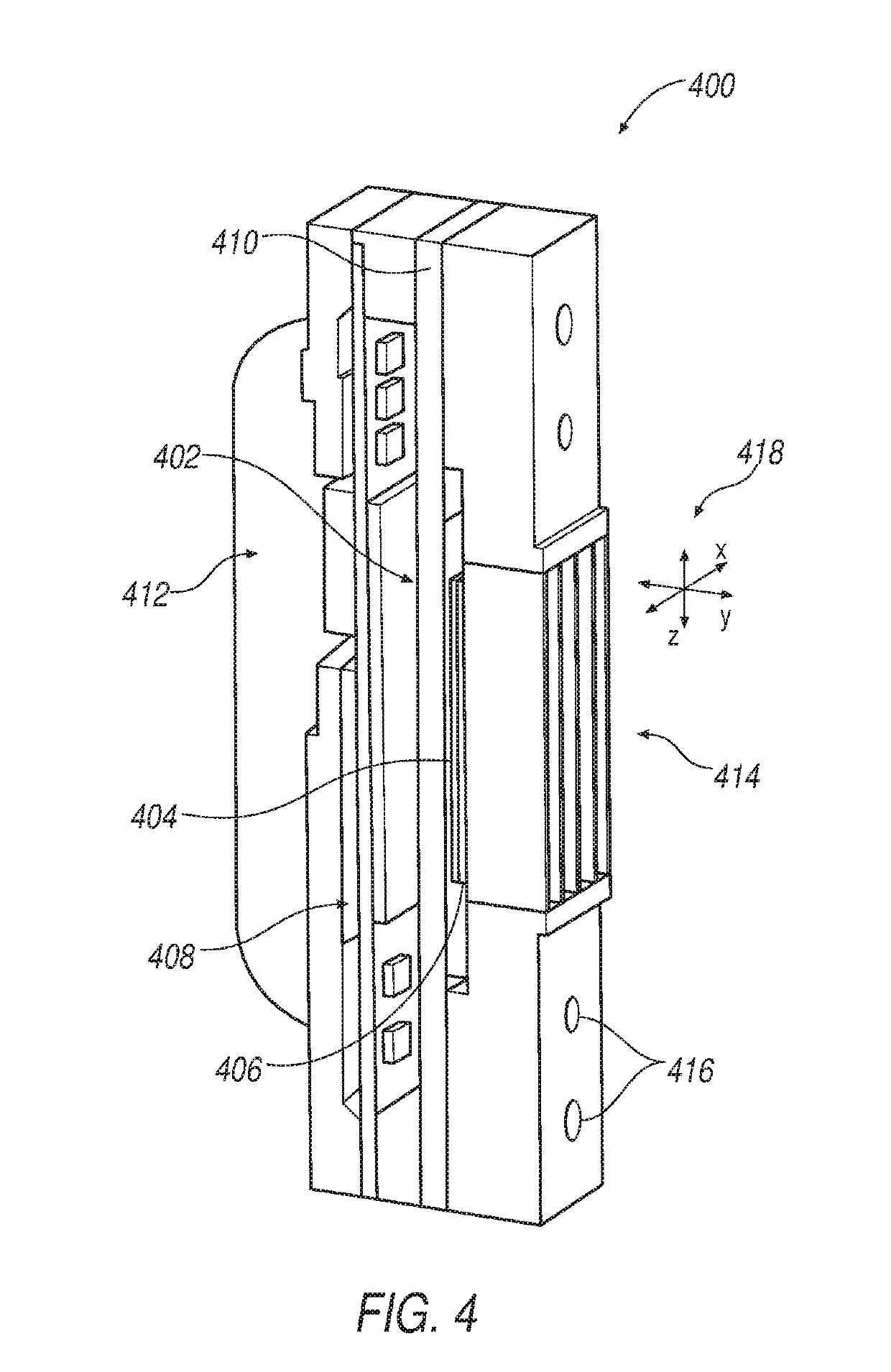Method and apparatus for artifact reduction for joint region in step and shoot computed tomography
a computed tomography and joint region technology, applied in the field of diagnostic imaging, can solve problems such as image artifacts, insufficient data, and inability to reduce artifacts for joint regions in step and shoot computed tomography systems, and achieve the effect of improving ccb scans
- Summary
- Abstract
- Description
- Claims
- Application Information
AI Technical Summary
Benefits of technology
Problems solved by technology
Method used
Image
Examples
experiment 1
[0056] A simulated FORBILD head phantom was projected and then reconstructed with a FOV of 350 mm. This phantom, having a complicated high contrast structure, presents a challenge object and thus it is good for reconstruction performance evaluation. The total number of slices of the reconstructed images is 128 slices with separation 0.625 mm. The end slice of the first rotation, i.e. 64th slice, has high resolution, and not having distortion, black shading, or other artifacts caused by data missing or extrapolation related inaccuracy.
experiment 2
[0057] Abdomen section of human body phantom was scanned with 80 mm shift from iso-center and the body section is reconstructed with FOV 512 mm with 80 mm center shift correspondingly. This experiment demonstrates the feasibility of interpolation between two rotations for regions far from the Z-axis in end slices where the gap has the maximum extent. Again, the total number of slices of the reconstructed images is 128 slices with a separation of 0.625 mm. When the body center has 80 mm offset from the Z-axis, the regions of the abdomen section is more than 200 mm away from z-axis. Thus, there exists a large data gap between two rotations. A corresponding image was obtained, having no distortion, black shading, or other strong artifacts caused by data missing or extrapolation related inaccuracy.
Algorithm 2. SAS reconstruction by weighted re-binning FDK algorithmfrom complementary projection data.Step 1: Re-binning the projection data p(γ,v,β) from fan geometryto parallel geometry for...
PUM
 Login to View More
Login to View More Abstract
Description
Claims
Application Information
 Login to View More
Login to View More - R&D
- Intellectual Property
- Life Sciences
- Materials
- Tech Scout
- Unparalleled Data Quality
- Higher Quality Content
- 60% Fewer Hallucinations
Browse by: Latest US Patents, China's latest patents, Technical Efficacy Thesaurus, Application Domain, Technology Topic, Popular Technical Reports.
© 2025 PatSnap. All rights reserved.Legal|Privacy policy|Modern Slavery Act Transparency Statement|Sitemap|About US| Contact US: help@patsnap.com



